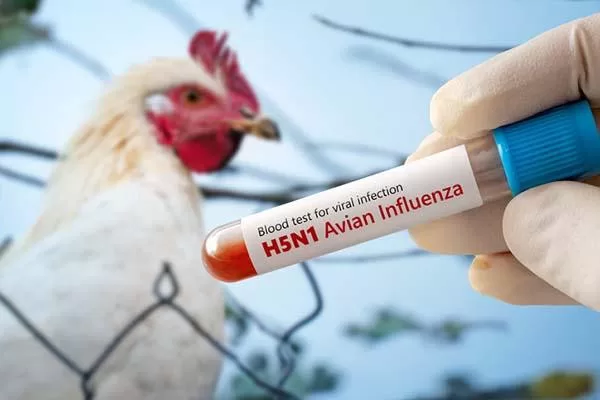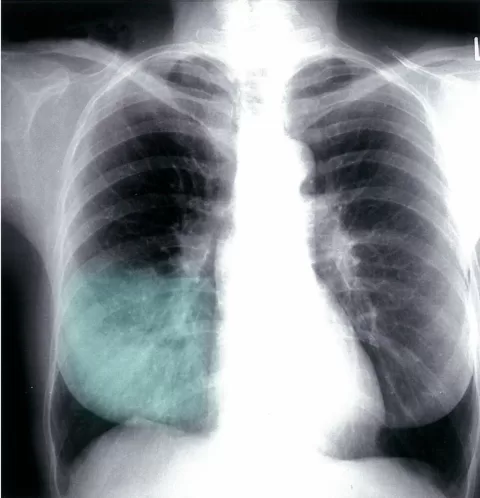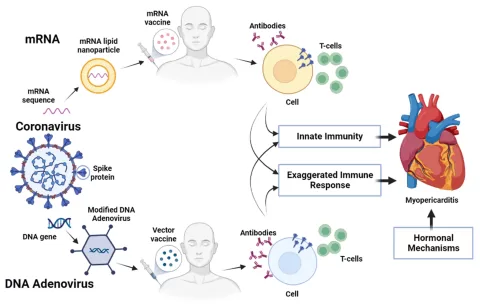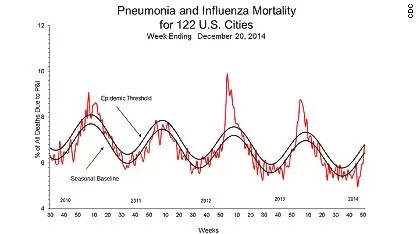Understanding bird flu symptoms is essential for anyone concerned about the health risks associated with this viral infection. Bird flu, or avian influenza, primarily affects birds but can also infect humans, leading to a range of symptoms that can vary in severity. Common indicators of bird flu in humans include fever, cough, and muscle aches, which can mimic regular flu symptoms but may escalate rapidly. The transmission risk of avian influenza extends beyond birds to include domestic animals, underscoring the importance of recognizing bird flu symptoms early. By being informed about bird flu prevention measures, individuals can better protect themselves and their communities from potential outbreaks.
Avian influenza, often referred to as bird flu, represents a significant concern for both public health and animal welfare. This infectious disease primarily impacts birds, particularly domestic chickens, but poses a serious risk of transmission to humans and other species. Symptoms associated with this illness can manifest in various forms, prompting the need for heightened awareness and preparedness. Recognizing avian influenza symptoms is critical in mitigating the impact of outbreaks, especially as new transmission pathways emerge. Understanding the nuances of this disease can empower individuals to adopt effective prevention strategies and safeguard their health.
Recognizing Bird Flu Symptoms in Humans
Bird flu, or avian influenza, can present a wide range of symptoms in humans, making prompt recognition critical for effective treatment. Common symptoms often resemble those of seasonal influenza, including fever, cough, and sore throat. However, unique indicators such as conjunctivitis have been noted, emphasizing the need for awareness among individuals who may have been exposed to infected birds. In more severe cases, symptoms can escalate quickly, potentially leading to pneumonia and respiratory distress, highlighting the importance of recognizing these signs early.
It is essential for individuals to monitor their health if they suspect exposure to bird flu. Symptoms can vary in severity, with some infected individuals experiencing mild respiratory issues while others may develop life-threatening conditions. Public health officials advocate for increased vigilance, particularly in regions experiencing outbreaks. Understanding bird flu symptoms not only aids in personal health management but also contributes to broader public health efforts aimed at controlling the disease’s spread.
Symptoms of Avian Influenza in Chickens and Other Birds
Chickens and other domestic birds are particularly susceptible to avian influenza, and recognizing symptoms is crucial for preventing outbreaks. Common signs in infected birds include lethargy, decreased egg production, coughing, and sneezing. Sudden deaths within flocks can also occur, often with little warning. Early detection is vital, as these symptoms can escalate quickly, leading to widespread infection among poultry populations. Regular health checks and monitoring can mitigate the risks associated with bird flu outbreaks in domestic settings.
Farmers and poultry keepers must remain vigilant in observing their flocks for signs of illness. Implementing strict biosecurity measures, such as limiting contact between domestic birds and wild avian species, can significantly reduce the transmission risk. Additionally, reporting unusual symptoms to veterinary authorities can facilitate prompt intervention, helping control avian influenza’s spread among chickens and other susceptible bird species.
Transmission Risks: How Bird Flu Spreads
Understanding the transmission risks associated with bird flu is essential for effective prevention strategies. The virus can spread through direct contact with infected birds or contaminated surfaces, making environments where birds congregate particularly vulnerable. Recent findings have shown that the virus can also be transmitted to domestic pets, such as cats and dogs, raising concerns for pet owners and emphasizing the need for awareness in households with animals. This novel transmission route underlines the complexity of bird flu spread and the importance of comprehensive monitoring.
Public health officials recommend implementing prevention measures that include avoiding contact with wild birds and ensuring that pets are kept away from potentially contaminated areas. Additionally, educating communities about the signs of avian influenza in both animals and humans can enhance early detection efforts. By fostering a better understanding of the transmission risks, individuals can play a crucial role in reducing the likelihood of bird flu outbreaks in both animal populations and human communities.
Preventive Measures Against Bird Flu
Preventing bird flu transmission requires a multifaceted approach that involves both individual and community efforts. Key prevention measures include practicing good hygiene, such as washing hands after handling birds or cleaning bird cages, and avoiding contact with sick or dead birds. For those living in areas with known outbreaks, it is advisable to refrain from visiting farms or areas where birds are raised. Additionally, keeping poultry indoors and ensuring that their living environments are clean can significantly decrease the risk of infection.
Public awareness campaigns also play a vital role in prevention. Informing the public about the symptoms of bird flu in both humans and animals helps ensure that individuals seek medical attention promptly, preventing further spread of the virus. Community guidelines that emphasize biosecurity practices, especially among poultry farmers, can help mitigate the risks associated with avian influenza. By working together, communities can build resilience against potential bird flu outbreaks.
The Importance of Monitoring Bird Flu Developments
Continual monitoring of bird flu developments is crucial in managing and mitigating the risks associated with this disease. Health organizations and agricultural agencies must stay updated on the latest findings regarding avian influenza transmission, particularly any new strains that may emerge. Recent reports of the virus affecting different animal species, such as cows and domestic cats, highlight the evolving nature of the virus and the need for ongoing surveillance. Such vigilance allows for timely responses to potential outbreaks and helps protect both animal and human health.
Furthermore, public health responses should be informed by the latest scientific research and trends in bird flu transmission. This includes understanding the ecological factors that contribute to outbreaks and the role of domestic and wild birds in the disease’s lifecycle. By investing in research and development of effective vaccines and treatment strategies, health authorities can better prepare for and respond to future bird flu challenges, ultimately reducing transmission risks and protecting communities.
Frequently Asked Questions
What are the common bird flu symptoms in humans?
Common bird flu symptoms in humans include fever, cough, sore throat, muscle aches, and eye redness. These symptoms can resemble those of seasonal influenza but may escalate quickly, leading to severe respiratory issues like pneumonia.
How can bird flu symptoms differ between humans and chickens?
Bird flu symptoms in humans can include respiratory distress and flu-like symptoms, whereas in chickens, symptoms may manifest as lethargy, decreased egg production, coughing, and sudden deaths. Early detection in poultry is crucial for controlling outbreaks.
What should I look for in bird flu symptoms in my pet cat?
Infected cats can exhibit bird flu symptoms such as respiratory distress, lethargy, and a loss of appetite. It’s important for pet owners to monitor their pets, especially if they have been exposed to potentially infected birds.
Are there unique bird flu symptoms that indicate a severe case in humans?
Yes, severe cases of bird flu in humans may lead to acute respiratory distress syndrome or pneumonia. Symptoms can progress rapidly, especially if initial signs include conjunctivitis, which is less common but noteworthy.
What bird flu prevention measures can help reduce symptom exposure in humans?
To reduce exposure to bird flu symptoms, it’s vital to avoid contact with wild birds, maintain good hygiene practices, and monitor pets after potential exposure. Staying informed about local outbreaks can also help in taking appropriate precautions.
| Group | Symptoms | Notes |
|---|---|---|
| Humans | Fever, cough, sore throat, muscle aches, eye redness | Symptoms can escalate to severe respiratory conditions. |
| Chickens and Other Birds | Lethargy, decreased egg production, coughing, sudden deaths | Early detection is crucial to prevent outbreaks. |
| Cats and Dogs | Respiratory distress, lethargy, loss of appetite | Less common but still a risk, especially for interacting pets. |
| Geese and Ducks | Unusual behavior, respiratory difficulties, sudden deaths | Identifying outbreaks is crucial for preventing community spread. |
| Children | Flu-like symptoms | Monitor closely after potential exposure to birds. |
Summary
Bird flu symptoms are essential to recognize for timely intervention and public health safety. The symptoms can vary significantly across different species, including humans, birds, and even pets. In humans, symptoms like fever and cough may mimic those of regular flu but can escalate quickly, necessitating urgent medical attention. As the threat of avian influenza persists, staying informed about bird flu symptoms and promoting preventive measures are vital in protecting both human and animal health.
The content provided on this blog (e.g., symptom descriptions, health tips, or general advice) is for informational purposes only and is not a substitute for professional medical advice, diagnosis, or treatment. Always seek the guidance of your physician or other qualified healthcare provider with any questions you may have regarding a medical condition. Never disregard professional medical advice or delay seeking it because of something you have read on this website. If you believe you may have a medical emergency, call your doctor or emergency services immediately. Reliance on any information provided by this blog is solely at your own risk.








